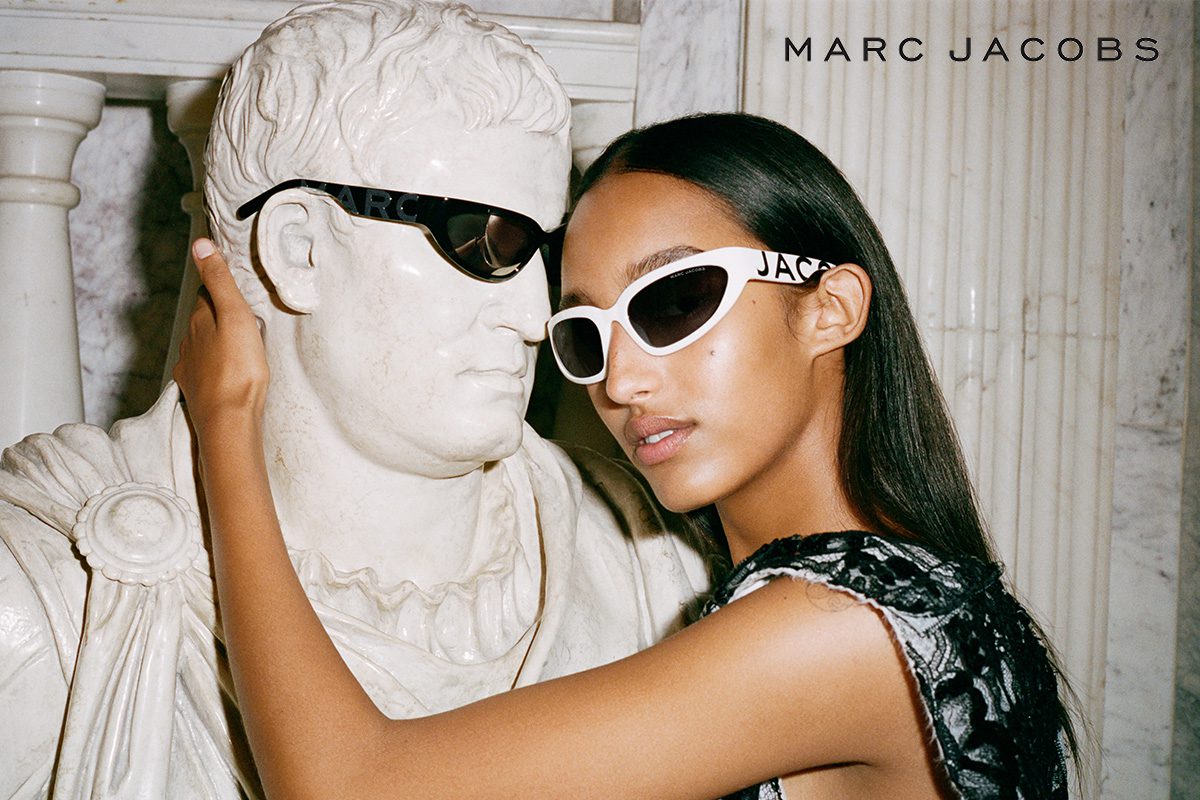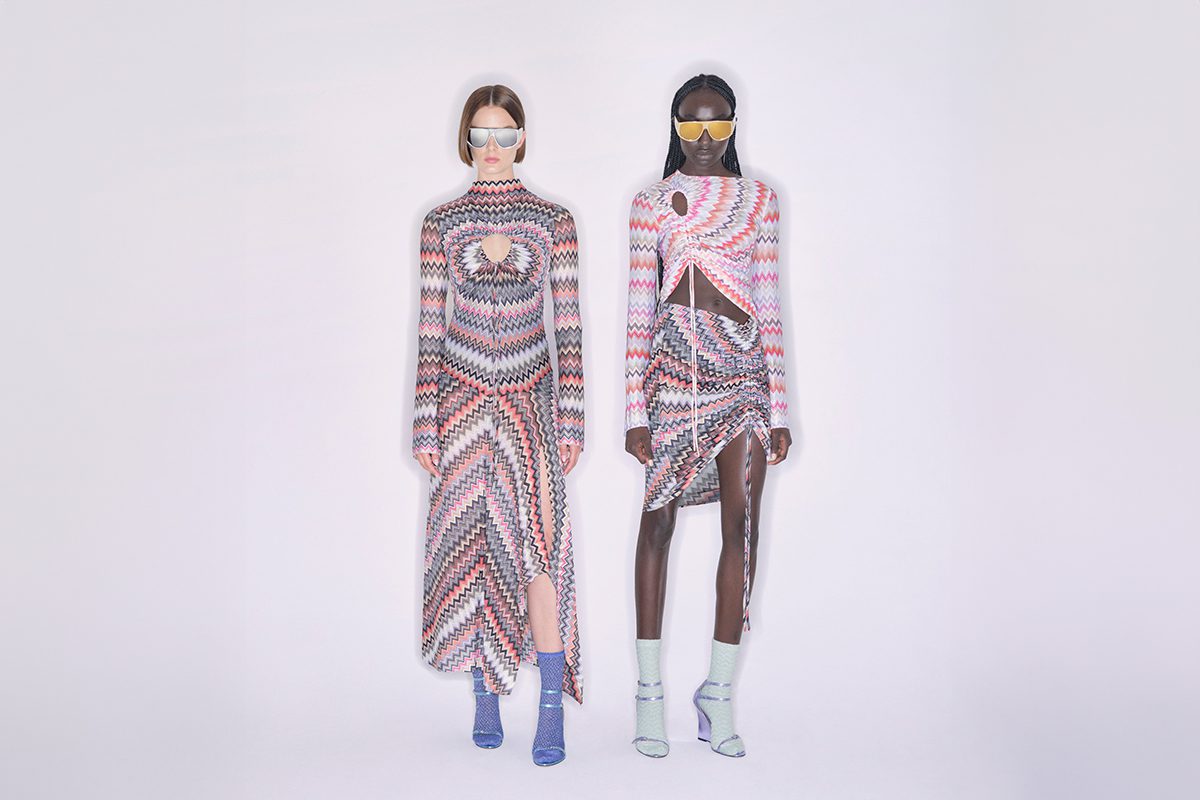
The youngest designer ever to be awarded fashion industry’s highest tribute — the ‘Perry Ellis Award for New Fashion Talent’ from The Co uncil of Fashion Designers of America — Marc Jacobs is beyond high street fashion. He’s a fashion legend.
Known for his eccentricity in the fashion circuit, Marc Jacobs is one of the few men out there who have the courage to wear a skirt at a red carpet event where there’s no escaping the all-seeing eye of the paparazzi. And he pulls it off alright, too! His reason to wear a skirt? He ‘feels good in them’.
And that’s not the only thing that makes this designer stand out in the crowd. Marc has always had a penchant for going that extra mile, doing something different and by virtue of that, creating something unusually new. He has had a deep impact on New York’s fashion sensibility and New Yorkers simply adore his rebellious, charming ways.
A junkie, an original, a winsome recluse, a brazen exhibitionist — Marc Jacobs is all this and much, much more. But the man does not stand alone. His long time friend and fashion collaborator Robert Duffy has played an important role in the past 27 years. From advising him on his collections, to encouraging him to feature in ads for his appropriately named men’s perfume Bang, Duffy has always stood by Jacobs and been his source of stability through the years. Together, they make for a heady mix of young street and provocative fashion — one that was much needed in their times. Since then, they have built the Marc Jacobs company that now verges on an empire, comprising clothes, shoes, accessories, stores and fragrances.
BIRTH OF A LEGEND
 Marc Jacobs was born in 1963, to parents who were agents for the William Morris Talent Agency. He lost his father when he was only three and his mother remarried thrice after that, moving young Marc and his two siblings around the state.
Marc Jacobs was born in 1963, to parents who were agents for the William Morris Talent Agency. He lost his father when he was only three and his mother remarried thrice after that, moving young Marc and his two siblings around the state.
In 1976, at the age of 13, he started working in the stockroom of a trendy New York clothing boutique, Charivari. He was so keen on working there that he did it for no pay. In the midst of folding sweaters and dressing mannequins, he befriended
influential patrons of the fashion industry, including sportswear designer Perry Ellis.
Good times and hard times awaited Marc, as he became estranged from his family in 1980 and decided to move in with his grandmother, who taught him how to knit and was a great influence on his life. He took up a summer course on costume-making at Parsons School of Design in Paris and later, on the advice of Perry Ellis, enrolled there full-time.
This effort reached fruition when he was awarded Parsons’s ‘Design Student of the Year’ for his senior collection of three Op-Art sweaters, hand-knit by his grandmother. The oversize, trapezoidal pieces also won him the school’s ‘Chester Weinberg’ and ‘Perry Ellis Gold Thimble’ awards. Impressed with his designs, Robert Duffy, executive for Ruben Thomas at that time, roped him in to design a ready-to-wear collection for the company’s Sketchbook label.
STRONG TIES
 In April, 1985, Marc charmed critics with his second collection for Sketchbook and also got included in a New York Times article on hot new designers, which called his work ‘young and irreverent with a whimsical, childlike grace and a hint of the exuberance of the 1960s’. Jacobs and Duffy finally established Marc Jacobs Inc, which was financed by the Canadian manufacturer, John Atkins. The duo eventually got fired and the firm went bankrupt. But this didn’t douse their enthusiasm for fashion.
In April, 1985, Marc charmed critics with his second collection for Sketchbook and also got included in a New York Times article on hot new designers, which called his work ‘young and irreverent with a whimsical, childlike grace and a hint of the exuberance of the 1960s’. Jacobs and Duffy finally established Marc Jacobs Inc, which was financed by the Canadian manufacturer, John Atkins. The duo eventually got fired and the firm went bankrupt. But this didn’t douse their enthusiasm for fashion.
By now, Marc was recognised for having an innate ability to design clothes that people wanted to wear. Whether he designed a satchel or a shoe, it was always something everyone wanted. From grunge to prom, from a private jet to a Tokyo nightclub, he had an outfit to suit every occasion.
1988 was an eventful year — one that carved Marc his very own special place in the fashion industry as he became the youngest designer ever to receive the ‘Perry Ellis Award for New Fashion Talent’ from The Council of Fashion Designers of America (CFDA). Following this, Perry Ellis executives hired Marc as creative director and Duffy as president of the women’s line.
The pair, during this period hired Tom Ford, a friend and ‘struggling designer’, to work on womenswear. And at 25, Jacobs was spearheading Perry Ellis. His first collection for the brand, with an American-flag theme, debuted to a packed crowd at the Puck building in Manhattan’s SoHo district. And his consequent collection for the brand made it to several cover-spreads of Vogue.
TRYING TIMES
 In 1992, Jacobs showed his notorious but landmark Grunge collection, one that people still marvel at, over 19 years later. Marc was into grunge and its throw-away attitude and he decided to put it on the runway — flannel shirts, thermals (re-imagined in cashmere, a Jacobs signature to this day), layers and layers, all of it topped with a little crocheted skullcap. The press was smitten. The powers at Perry Ellis, however, were not. Jacobs and Duffy were fired shortly after this because the executives weren’t convinced that women would pay a lot of money for such clothes.
In 1992, Jacobs showed his notorious but landmark Grunge collection, one that people still marvel at, over 19 years later. Marc was into grunge and its throw-away attitude and he decided to put it on the runway — flannel shirts, thermals (re-imagined in cashmere, a Jacobs signature to this day), layers and layers, all of it topped with a little crocheted skullcap. The press was smitten. The powers at Perry Ellis, however, were not. Jacobs and Duffy were fired shortly after this because the executives weren’t convinced that women would pay a lot of money for such clothes.
Despite all this, he never played it safe design-wise, exploring ideas that have since become his signature. Marc always looks to the past for inspiration, with a sense of irony and wit, and still has the tendency to represent street clothes on the runway, which though familiar now, was remarkable then.
Jacobs and Duffy formed their own licensing and design company, Marc Jacobs International Company in 1993. They made a comeback in 1994 with a small show held on Marc’s birthday. The collection was, in Marc’s words, ‘a little funky, a little trashy and a little chic’. Top models Linda Evangelista and Naomi Campbell walked at his show for free, proving the kind of respect that Marc commanded in the industry.
TURNING POINT
In 1997, after months of negotiation and with the help of Bernard Arnault, Marc assumed the newly created post of artistic director at Louis Vuitton, where he was responsible for the luxury label’s leather goods as well as creation of the house’s first clothing line for men and women.
Proving that 1997 was truly a golden year for the hip designer, the CFDA awarded Jacobs the ‘Womenswear Designer of the Year’. Following this, he was also named ‘Womenswear Designer of the Year’ at the VH1 Fashion Awards and there was no doubting the credibility of his designs — his beautifully made clothes were effortlessly elegant, bright and polished. In 2000, Marc by Marc Jacobs debuted its Spring Summer collection, followed by the opening of their store in Manhattan next year.
CFDA named him the ‘Menswear Designer of the Year’ in 2002, and he was honoured with a plaque on the ‘Fashion Walk of Fame’ in New York City’s Garment District. In 2005, he launched a line of childrenswear called ‘Little Marc’ that saw great response from buyers.
The Spring Summer 2010 collection had the designer looking back at elements from the ’60s or the ’90s. Dressed up in their finery, the models were given a glittering tinsel edge. They wore styles reminiscent of the ’20s including Coco Chanel-style jackets, drop-waist dresses and skirts layered in tiers with that fringe particular to satin lampshades. This is still noted as one of his memorable collection in recent times.
MARC JACOBS EYEWEAR

Marc Jacobs has made his presence felt in eyewear fashion just as much as any other reigning designer. He always ran away from the conventional and his eyewear reflects his eccentricity and his originality. His eyewear combines street savvy designs with radical styles and features different kinds of sunglasses.
Marc Jacobs sunglasses carry his signature flair for innovative creativity. They are bold, sometimes shocking in design, setting them apart from other sunglasses in the market. Celebrities like Mariah Carey, Nicole Richie, Adam Brody and Sarah Jessica Parker flaunt his eyewear and swear by his designs.
Marc’s over-the-top eyewear literally seeks out those who just love standing out in a crowd and capture immediate attention of an onlooker at the first glance – much like himself. Enriched by details that transform a very simple pair to a classy one, he knows how to please his critics as well as wearers.
One of Marc’s famous ‘upside down’ sunglasses actually have their frames designed in a way that they appear to be upside down! He also loves using prints, polka dots, gradients on aviators, oversized, round-shaped cat eye sunglasses as well as frames. And Marc simply loves retro! His Spring Summer 2011 collection was all about looking back at glorious, bright hot retro colours like pink and red.
MARC JACOBS TODAY
 In June, 2011, the CFDA honoured Jacobs with its prestigious ‘Geoffrey Beene Lifetime Achievement’ award. He went ahead to also launch an initiative ‘Saving the Atlantic Forest’, a charitable project supporting The Nature Conservancy, a leading conservation organisation working to protect ecologically important lands and waters. The campaign’s mission is to protect and restore the Atlantic Forest in Brazil, one of the world’s most endangered tropical forests.
In June, 2011, the CFDA honoured Jacobs with its prestigious ‘Geoffrey Beene Lifetime Achievement’ award. He went ahead to also launch an initiative ‘Saving the Atlantic Forest’, a charitable project supporting The Nature Conservancy, a leading conservation organisation working to protect ecologically important lands and waters. The campaign’s mission is to protect and restore the Atlantic Forest in Brazil, one of the world’s most endangered tropical forests.
At the centre of this worthwhile project are Marc by Marc Jacobs MMJ 261/s bio-based sunglasses, made from a material derived from castor-oil seeds. The chocolate coloured sunglasses, which feature leaf textured temples, are packaged in a chic case made from repurposed leather. In support of this project, Marc by Marc Jacobs will make a contribution to The Nature Conservancy to support the restoration of the Atlantic Forest.
Today, Jacobs is credited for reigning the fashion industry not only in terms of creating fashion, but also having reinvented it time and again. And rightly so!
Marc Jacobs Timeline
- 1984: Designed ready-to-wear collection for Ruben Thomas’s Sketchbook label.
- 1988: Became the youngest designer ever to receive the CFDA’s Perry Ellis Award for New Fashion Talent.
- 1992: Showed his notorious but landmark Grunge collection. Got fired, along with Robert Duffy, from Perry Ellis.
- 1997: Assumed the post of artistic director at Louis Vuitton.
- 2001: Opened a store for Marc by Marc Jacobs in Manhattan.
- 2011: The CFDA honored Jacobs with its prestigious Geoffrey Beene Lifetime Achievement award.
___________________________________________
– Ishita Bal












